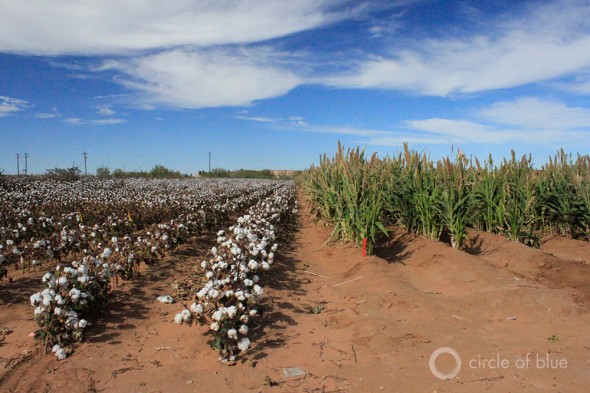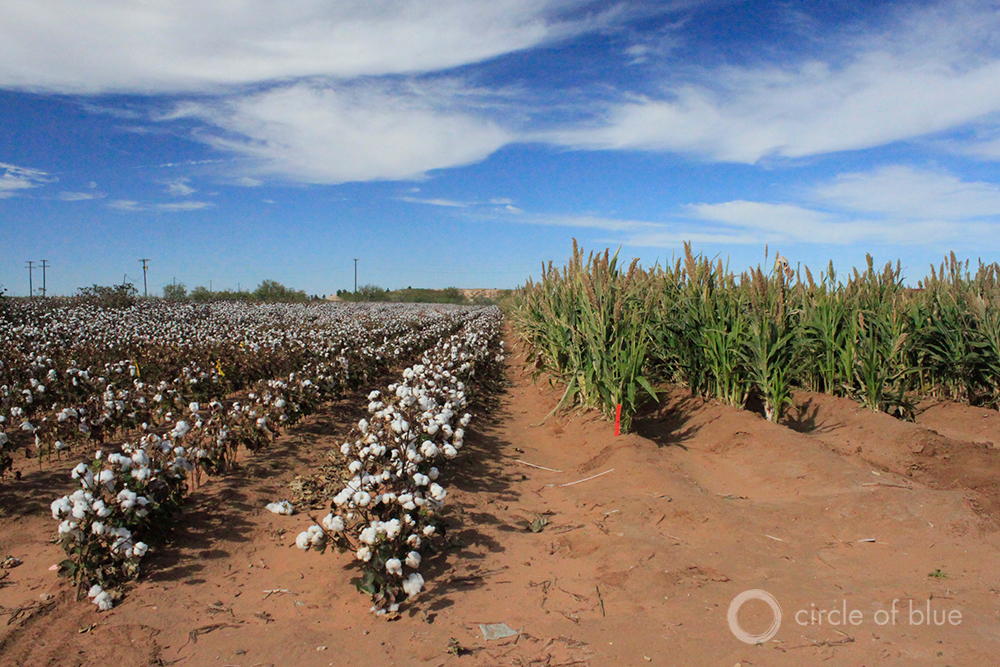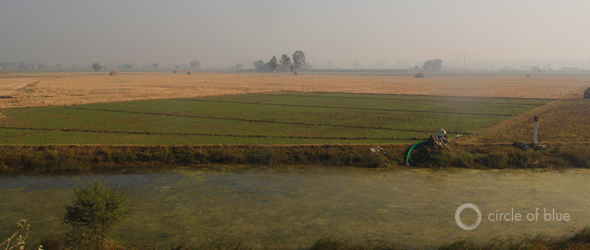Report: USDA Says Farmers Expected to Plant More Water-efficient Crops in 2013
Though corn acreage is forecasted to rise slightly over last year’s planting, the biggest jump is predicted for sorghum, which uses less water.

By Brett Walton
Circle of Blue
With a pernicious drought camped over the nation’s agricultural heartland, farmers in the United States are expected to plant more water-efficient sorghum, according to a U.S. Department of Agriculture report released yesterday.
The land dedicated to sorghum — which tolerates drought better than other grains — will rise by 22 percent, or 566,000 hectares (1.4 million acres) over last year. It is both the largest absolute and largest relative increase of any crop for the 2013 season. The USDA expects farmers to plant a total of 3.1 million hectares (7.6 million acres) of sorghum, which is the most since 2008. Sorghum acreage has climbed 40 percent in the last two years.
–Dan O’Brian, ag economist
Kansas State University
The USDA’s Prospective Plantings report is a first look at the upcoming farm season. The agency asks farmers at the beginning of March what crops they plan to put in the ground.
“It’s the first step in the flow of information,” said Dan O’Brien, an agricultural economist at Kansas State University. “There were no major surprises, and the numbers aren’t that different than what was expected.”
O’Brien told Circle of Blue that drought tends to push up the number of acres planted with sorghum.
“In a lot of cases, it’s a risk-management crop,” he said.
The growth in sorghum production is centered in some of the states suffering most from drought — Colorado, Kansas, Missouri, Nebraska, and Texas. Three-quarters of the U.S. crop will be planted in just two states, Kansas and Texas.
The nation’s largest crop, however, will see little change: farmers are expected to plant 39.3 million hectares (97.3 million acres) of corn, a slight increase over 2012 and the most planted since 1936. After a poor harvest last year, corn prices remain near record highs.
High Prices, Low Morale
Unlike the beginning of last spring, when spirits were buoyed in anticipation of record harvests, farmers in the Great Plains today are downright gloomy about the 2013 growing season.
–John Hansen, president
Nebraska Farmers Union
“They’re mighty uneasy just thinking about it,” said John Hansen, president of the Nebraska Farmers Union. “There is genuine cause for angst about how this is going to go.”
The data confirm it. Since last July, every single acre of Nebraska has been in drought. Some 96 percent of the state is currently classified as in ‘extreme’ or ‘exceptional’ drought, the harshest levels. Soils are dry through the root zone. Reservoirs are low, and winter snowfall was less than normal.
Hansen told Circle of Blue that farmers are preparing for a dry year by fine tuning their irrigation equipment, so as not to waste a drop. Some are pondering if they should switch to a different crop or plant fewer seeds.
This uncertainty about what might get planted is why yesterday’s USDA report is an indicator and not the final word — fluctuations do happen. Last year, the estimate for corn plantings was off by 1.4 percent. The soybean estimate was a bit worse, off by 4.4 percent, but predictions for wheat were spot on.
Weather and Markets
O’Brien said that two variables will influence any cropping changes made before the first seeds are sown: weather and markets.
Corn typically goes in the ground at the beginning of May. If rainfall does not perk up by then, a farmer could shift to soybeans or sorghum, two crops that are planted a few weeks later, giving the skies a second chance to open up.
Prices, too, could move and create new financial incentives for farmers.
Final cropping decisions will be made in the next two months. Then in late June, the USDA will report on what crops farmers actually put in the ground.
Brett writes about agriculture, energy, infrastructure, and the politics and economics of water in the United States. He also writes the Federal Water Tap, Circle of Blue’s weekly digest of U.S. government water news. He is the winner of two Society of Environmental Journalists reporting awards, one of the top honors in American environmental journalism: first place for explanatory reporting for a series on septic system pollution in the United States(2016) and third place for beat reporting in a small market (2014). He received the Sierra Club’s Distinguished Service Award in 2018. Brett lives in Seattle, where he hikes the mountains and bakes pies. Contact Brett Walton








Leave a Reply
Want to join the discussion?Feel free to contribute!